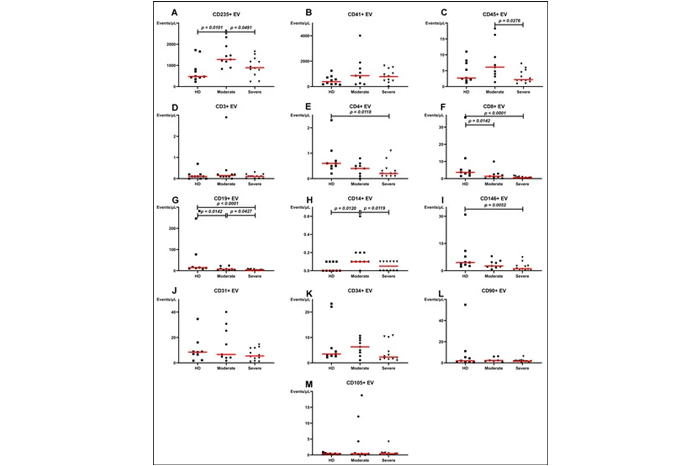
Results of the study of the pathogenesis of the new coronavirus infection (COVID-19)
In May 2021, the first article was published on the results of a study of the pathogenesis of the new coronavirus infection by Igor Kudryavtsev, Olga Kalinina, Vadim Bezrukikh, Olesya Melnik and Alexey Golovkin (“The Significance of Phenotyping and Quantification of Plasma Extracellular Vesicles Levels Using High-Sensitivity Flow Cytometry during COVID- 19 Treatment” Viruses, 2021, 13(5), 767. This article analyzes the possible involvement of extracellular vesicles both in the progression of the underlying disease and in the development of its complications.
It is obvious that in modern conditions the development of effective and affordable methods for diagnosing and predicting the course of COVID-19 is of particular importance. At the same time, despite the theoretical prerequisites for the involvement of extracellular vesicles in the pathogenesis of this disease, they are difficult to study, especially in conventional laboratories, due to their small size (up to 500-600 nm). For this reason, the researchers proposed a method for studying extracellular vesicles in the blood plasma of patients using high-sensitivity laser flow cytometry, which makes it possible to separately study vesicles with a diameter of about 100 nm, depending on the presence of various surface markers in their structure.
The results obtained made it possible to establish that the concentration of vesicles of various cellular origin depends on the severity of the course of the disease. In particular, patients with severe COVID-19 had a higher level of vesicles of erythrocyte and monocyte origin, while those of B-cell origin were lower compared to the control group. At the same time, during therapy, the level of extracellular vesicles carrying markers potentially associated with the progression and spread of the virus significantly decreased.
Thus, the proposed method is potentially applicable both for studying the subtle mechanisms of the pathogenesis of acute coronavirus infection and for assessing the effectiveness of therapy and predicting the course of the disease. The proposed method is relatively simple and available to many laboratories.
Publication link: https://doi.org/10.3390/v13050767
28.05.2022
